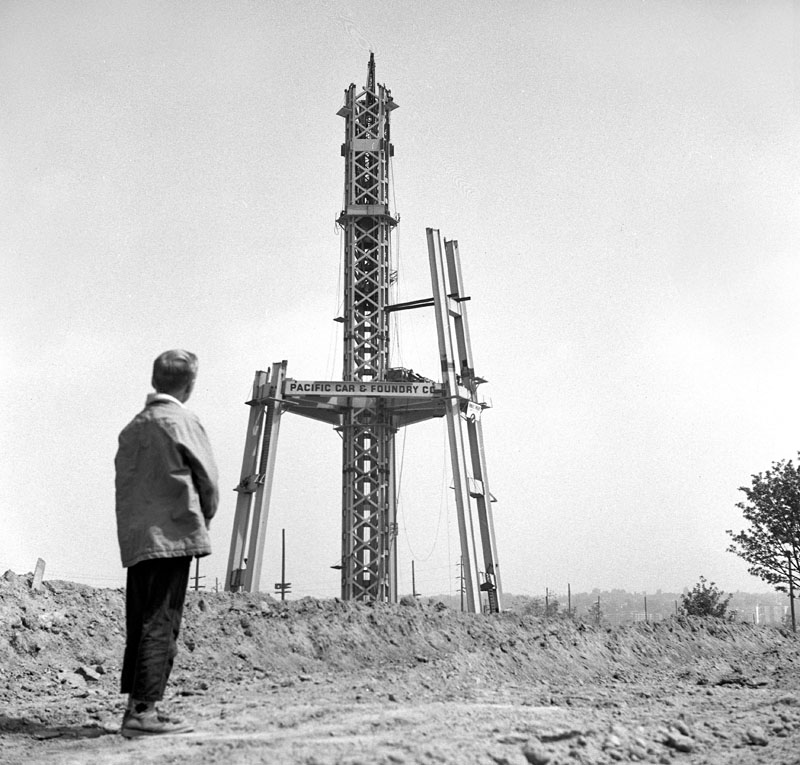Since 1982, one of the small enduring pleasures of The Seattle Times on Sundays has been Paul Dorpat‘s before-and-after photo feature, which supplies most of the 200-plus images in Now & Then, MOHAI’s final show before moving to South Lake Union next year. In one sad shot, we see Paul Thiry’s original 1952 design for the museum, which had to be rather brutally flipped and modified when the 520 bridge was built. Soon it’ll be demolished for a new bridge. If there is a lesson to be imparted here, it is that time stands still for no one, for no building, not even for our original city topography (see Denny Hill being regraded, a few holdout structures teetering on isolated dirt mounds). Because so many of the photos are familiar in this urban-history show, arranged mostly by neighborhood, there’s a kind of continuity to the constant disruption. Lake Washington is suddenly lowered; the city suddenly rebuilds after the 1889 fire; the Alaskan Way Viaduct suddenly blights the waterfront . . . and just as suddenly it, too, will be gone. History is both gradual and abrupt; its gears aren’t smooth, but have grinding teeth. The poignancy of the show—which increases with the age of the visitor—is to be faced with the constant process of destruction and disappearance. First your childhood home is razed for a freeway or a condo or a stadium, then you’re the one being plowed into the earth. Dorpat’s partner, French-born Jean Sherrard, is responsible for most of the newer, color images of our present Seattle. Dorpat, a Seattle native, is more the archivist. He was there when the Space Needle began to rise, exactly 50 years ago; though in its half-built form, it almost seems a crumbling ruin.
The Fussy Eye: Rising and Falling
Images of an ever-changing Seattle.








